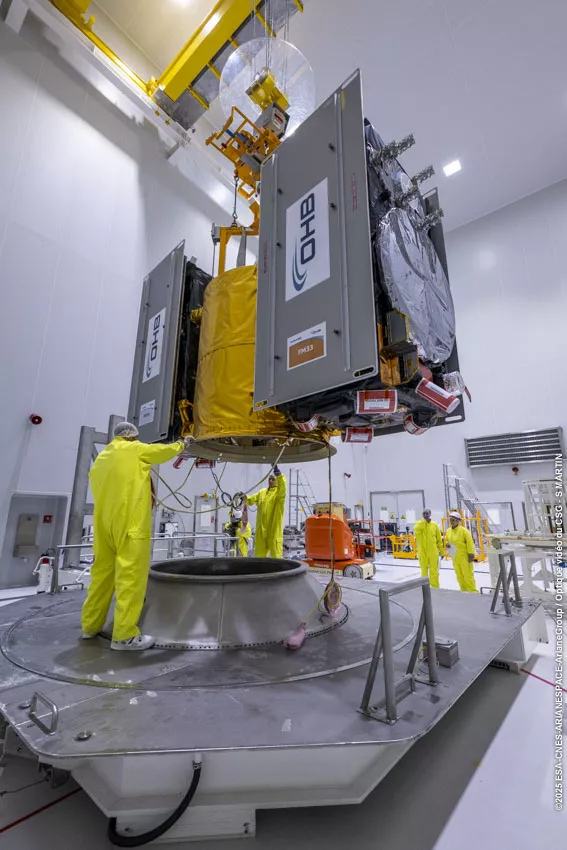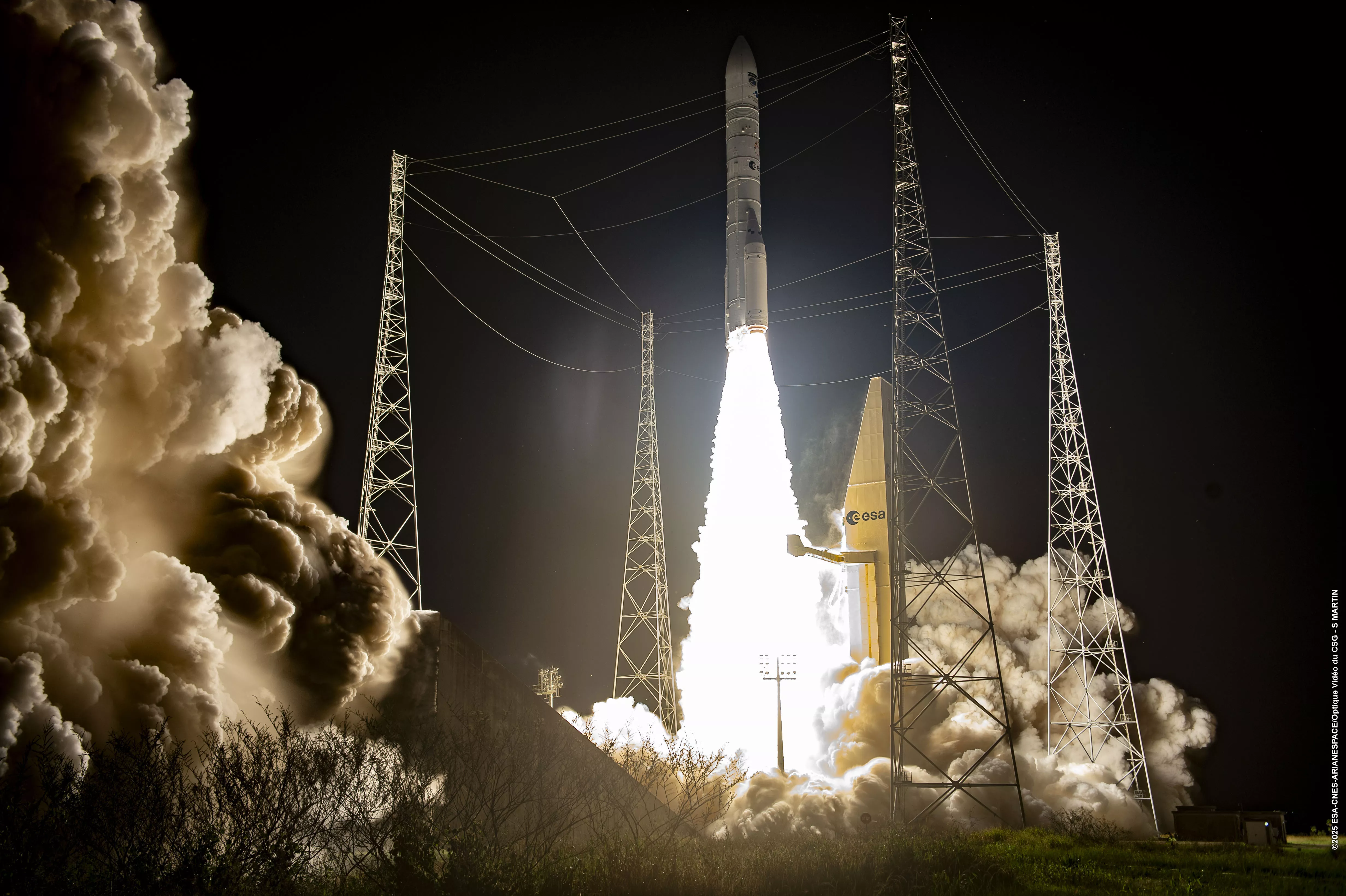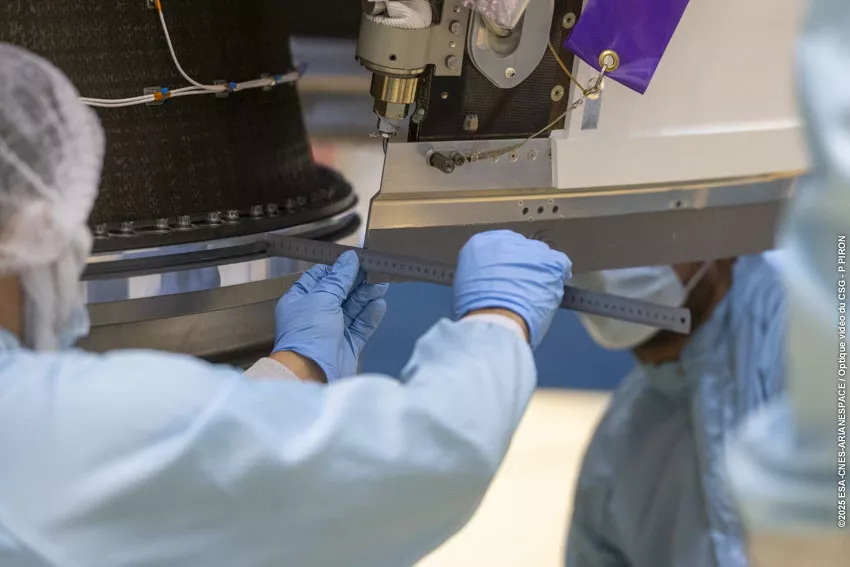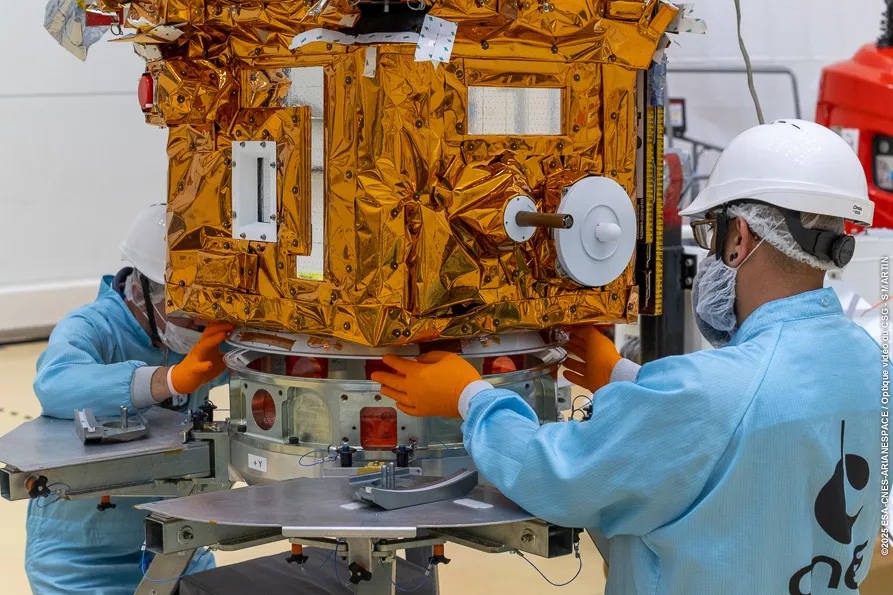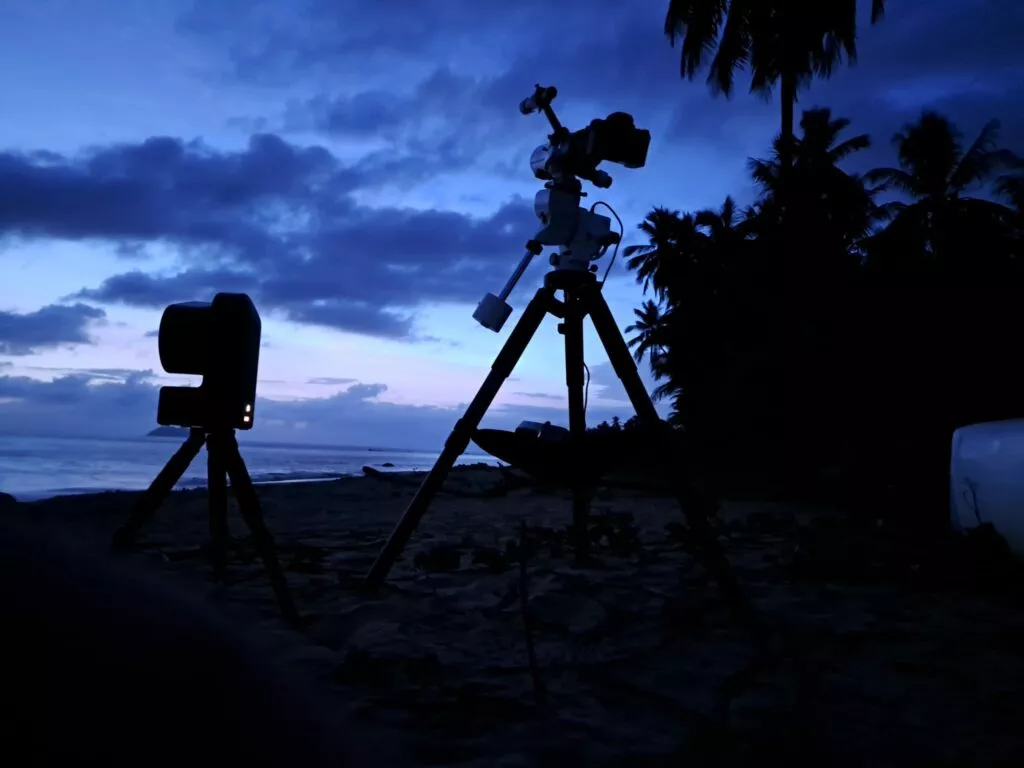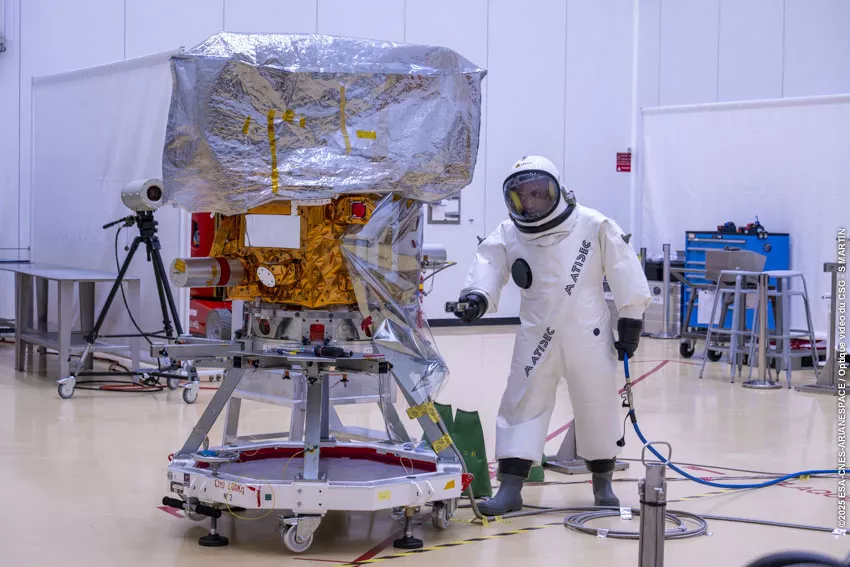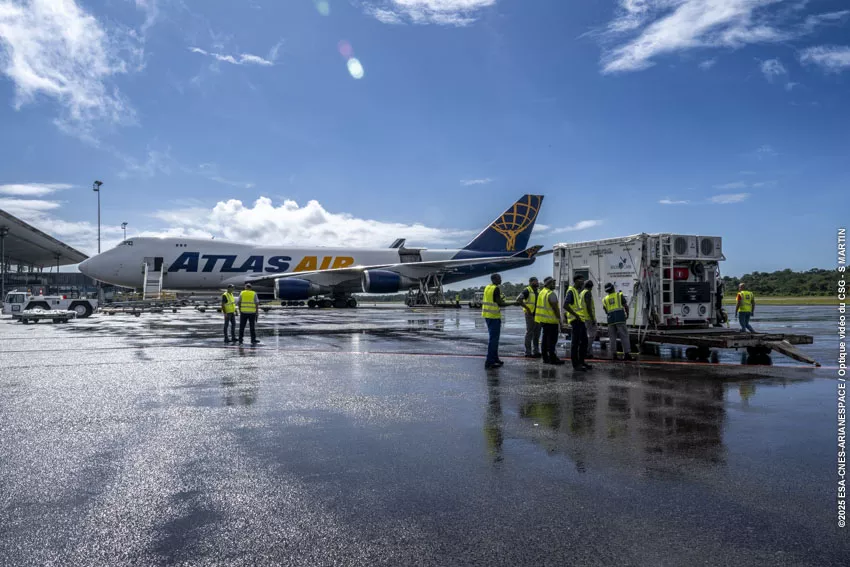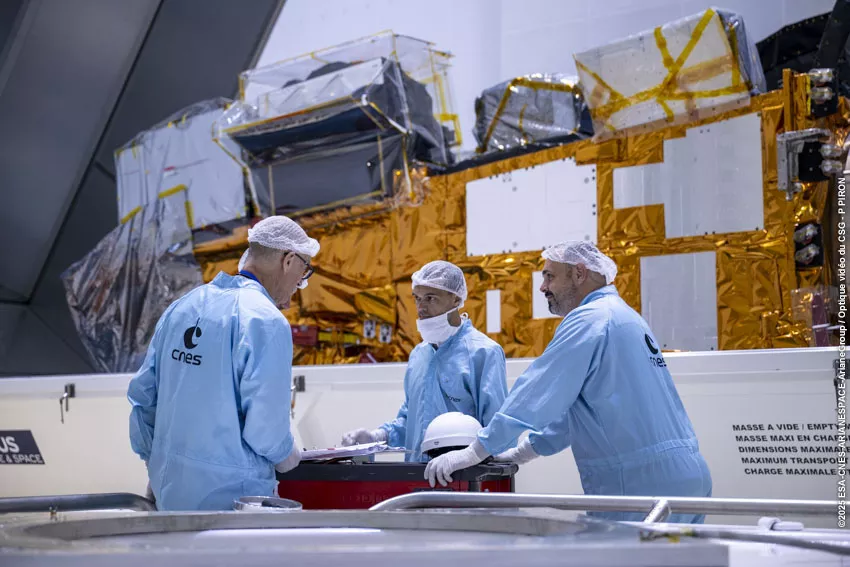Ariane 5, the legendary launcher, takes to the skies for the last time
On 16 June 2023, Ariane 5, Europe's flagship launcher, will take off for the 117th and final time from Europe's spaceport.

To bring this 27-year career to a close, Ariane 5 will place its final passengers in orbit. The launcher will end its legendary career with a mission to help improve the security of military communications with the Syracuse satellite.
Since its maiden flight on 4 June 1996, Ariane 5 has made a total of 116 flights, with 111 successes. Holding the record for the most consecutive successful Ariane launches, the medium/heavy-lift space launcher remains a benchmark in its field.
Several of these launches served as prologues to key moments in Europe's space adventure. Let's take this opportunity to look back at the launcher's iconic missions:
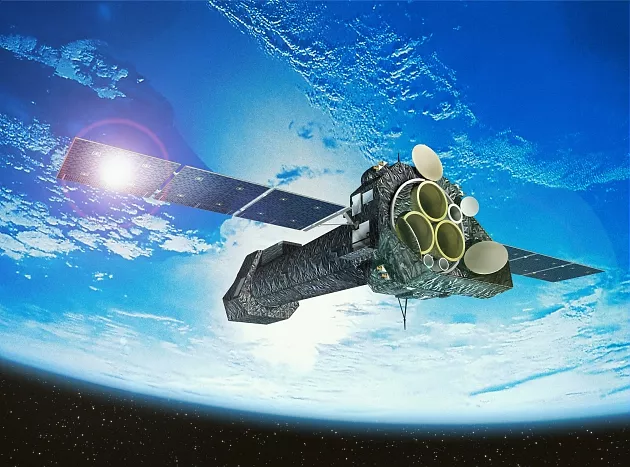
Titre brut
V119 XMM-Newton
10 December 1999
For its first scientific mission, Ariane 5 was entrusted with a heavy responsibility: carrying the largest and most sophisticated observation satellite ever built in Europe. This is XMM-Newton (XMM stands for X-Ray Multi-Mirror Mission), developed by ESA to study X-ray emissions in space.
The observational data collected since 1999 is still helping to advance our knowledge of the quantity and distribution of dark matter, young stars at the heart of dense clouds, the physics of black holes and neutron stars, and the production and circulation of heavy elements in the Universe.
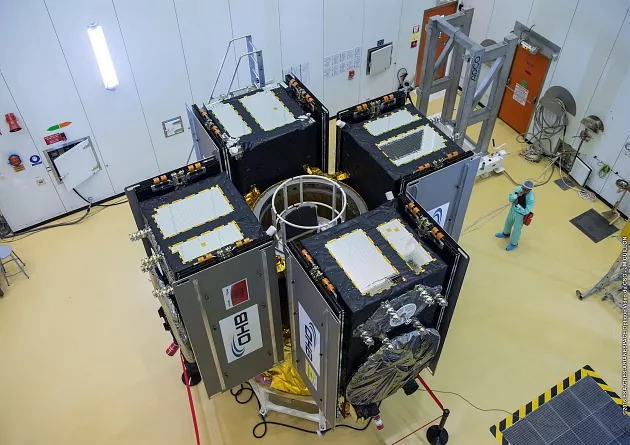
Titre brut
VA233 Galileo
17 November 2016
An emblematic project of the European Commission and the ESA, Galileo will provide a global navigation system independent of the American GPS. To speed up the orbital insertion of the constellation, comprising no fewer than 30 satellites, Ariane 5 will do something unprecedented: launch 4 satellites simultaneously.
Unlike telecommunications satellites, which are equipped with propulsion systems to supply part of the energy needed to put them into orbit, Galileo satellites have to be transported almost to their final destination, at an altitude of nearly 23,000 km. Although the constellation is now operational, the last two satellites have yet to be launched on board Ariane 62, one of the two versions of Ariane 6.

Titre brut
VA245 BepiColombo
20 October 2018
The BepiColombo mission is dedicated to exploring Mercury. To withstand the extreme temperatures due to its proximity to the Sun, the satellite is topped by a kind of fairing that will be ejected when it arrives around Mercury in December 2025. Since its launch, the probe has made one flyby of Earth, two of Venus and two of Mercury – four more are planned.
Once they arrive at their destination, the two scientific aircraft will separate to follow different orbits. Spinning on its axis so as not to overheat, MMO (Mercury Magnetospheric Orbiter) will study the planet's external environment – magnetosphere, atmosphere, dust, solar wind, etc. – while MPO (Mercury Planetary Orbiter) will focus on its surface and interior.
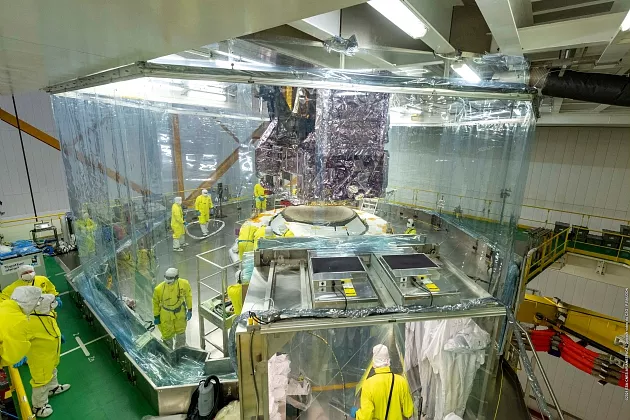
Titre brut
VA256 James WEBB
25 December 2021
Designed as the successor to Hubble, the James Webb Telescope is the most ambitious and powerful telescope ever sent into space. One of its key features is a technology that captures 70% more light, enabling it to capture unprecedented images revealing the first stars and galaxies formed after the Big Bang.
For this mission, co-produced by NASA, ESA and CSA (Canadian Space Agency), solutions had to be devised to guarantee perfect compatibility between Ariane 5 and its passenger. After a journey of 29 days, the injection towards the Lagrangian point 2 was carried out with remarkable precision.
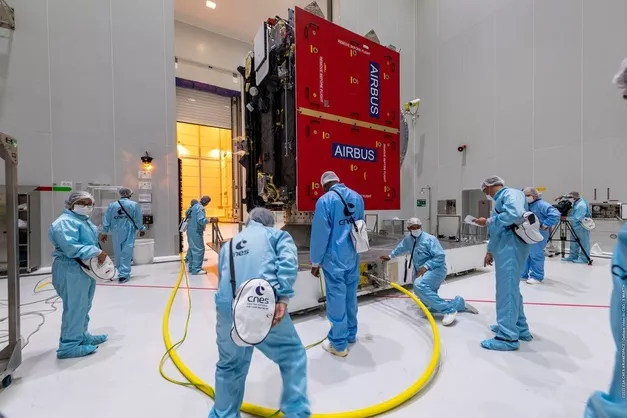
Titre brut
VA260 JUICE
14 April 2023
This year, ESA launched one of the most important missions in its history: JUICE stands for JUpiter Icy Moons Explorer. This scientific programme aims to conquer Jupiter and make detailed observations of its three mysterious ocean moons.
The mission will help to advance science, but will not be able to answer the question on everyone's mind: could there be another form of life somewhere other than Earth? The probe's main scientific mission will be to search for conditions favourable to life as we know it on Earth, in habitats deep beneath the layer of ice on Jupiter's ocean moons.
The probe will reach Jupiter's orbit after an eight-year journey and will be able to begin studying its mysterious ocean moons.
Ariane 5 will have demonstrated its reliability and its importance for Europe in space.
You can find a list of all its flights in launch history.
Follow us on social media to follow every step of the preparations for the latest Ariane 5 flight. Feel free to share your thoughts on Ariane 5 and your launch photos with #generationAriane5.
In the same section
-
VV28 mission in a nuthsell
01/12/2025VA266 mission in a nutshell
01/12/2025VA264 mission is a success!
04/09/2025VV27: behind the scenes at Europe’s spaceport as MicroCarb and CO3D get ready for lift-off
31/07/2025VV27: two conferences to find out more about satellites
30/07/2025Flight Vega-C : VV27 mission in a nutshell
24/07/2025Stargazing Event Ahead of the VV27 Mission Launch

